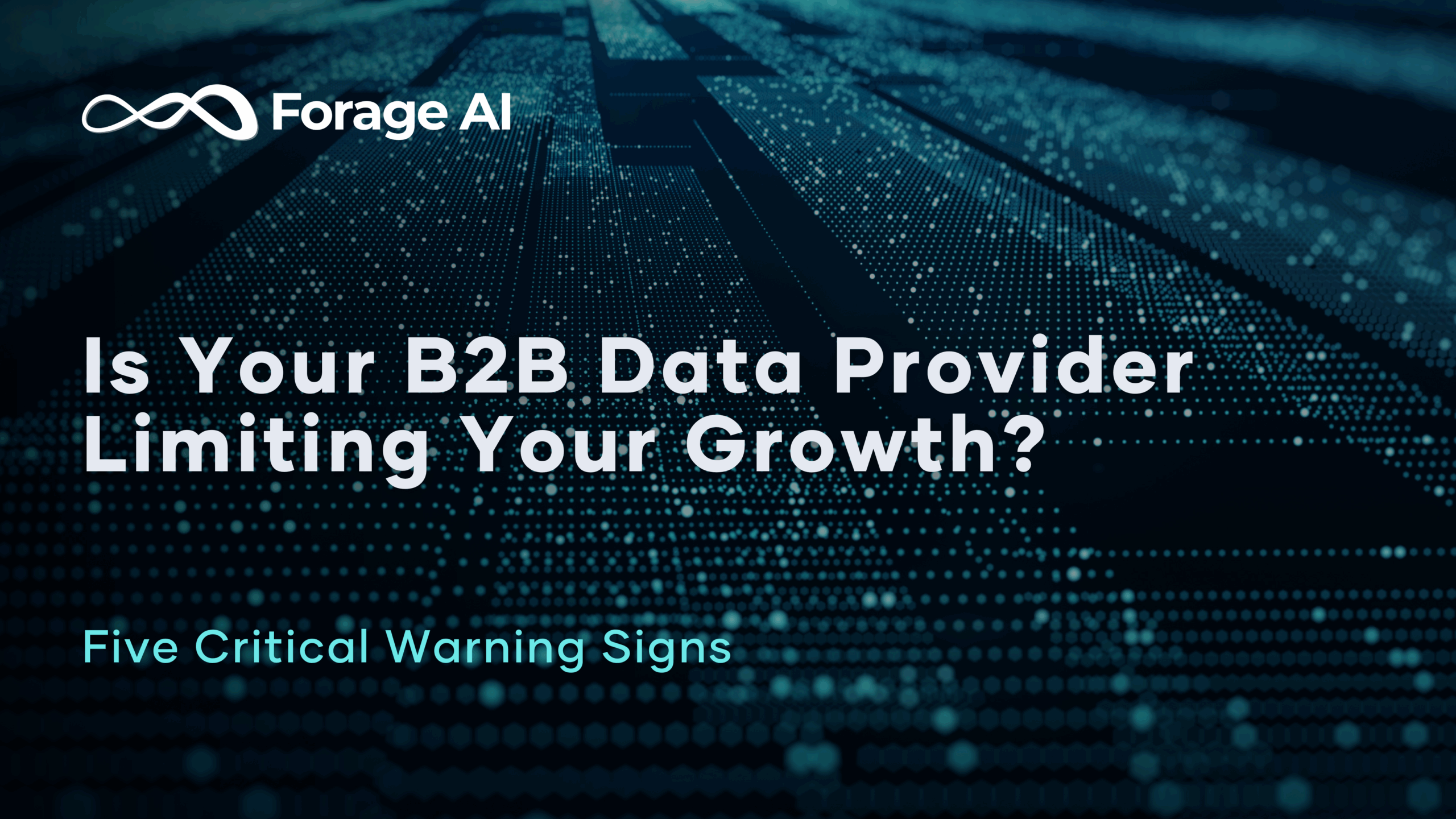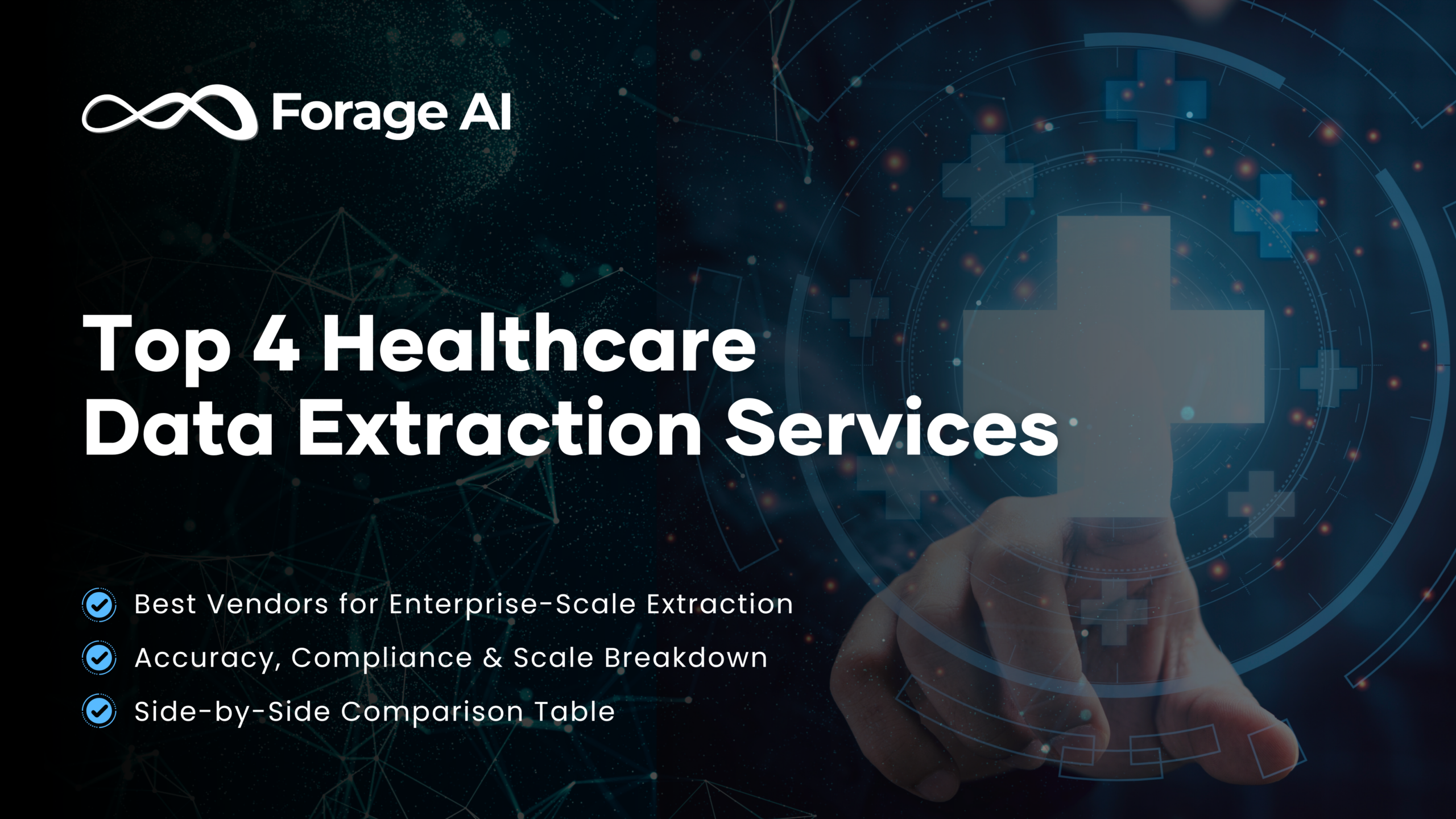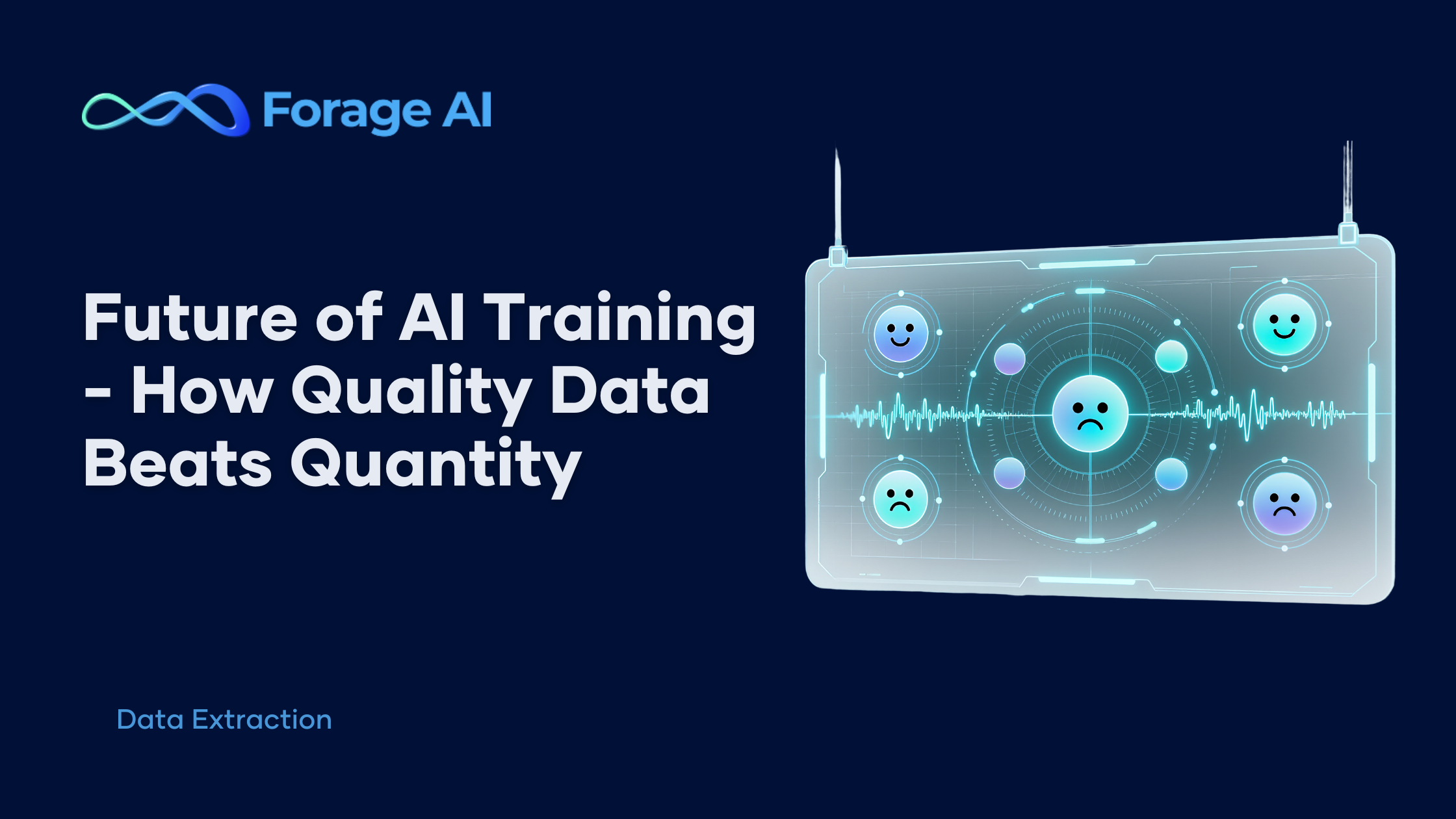According to industry reports, sales teams spend 20% of their workday researching prospects, that’s over 1.5 hours daily per rep just finding basic contact data. Meanwhile, 21 cents of every marketing dollar gets wasted due to poor data quality that doesn’t convert.
The real problem isn’t with finding B2B database providers; it’s finding one that really works when your business grows beyond 50 employees and simple lead lists.
Is your data infrastructure ready for rapid growth? Five warning signs reveal where traditional providers fail—and how Forage AI solves what they can’t.
When Growth Exposes Provider Limitations: Five Critical Scenarios
These scenarios hit successful companies harder than struggling ones. Growth exposes weaknesses in data infrastructure that weren’t visible at smaller scales. We’ve seen companies triple their sales team only to discover their “enterprise-grade” provider can’t handle the volume without massive cost increases.
Each scenario represents a different breaking point where traditional b2b data solutions shift from helpful tools to growth constraints. The companies that recognize these patterns early maintain their competitive edge, while others get stuck fighting their own data systems.
Scenario 1: The Seat-Based Growth Penalty
Your sales team grows fast, but you’ve hit your user limit with your current provider. Adding more seats would double your monthly spend, while marketing can’t access the system because sales maxed out the licenses.
Major providers face this constantly; enterprise plans often start at $15,000+ annually for basic access with limited users and credits. The pricing model penalizes growth at every tier.
Sound familiar? This is the growth penalty that seat-based pricing creates.
What This Means for You: Every new hire becomes a budget decision rather than a growth opportunity. Teams fight over credits while expansion stalls because data access doesn’t scale affordably.
Companies stuck here need unlimited access models where your data provider grows with you instead of constraining you. Whether you’re working with corporate data, industrial data, or service provider information, access shouldn’t be rationed by seat count.
Scenario 2: The Manual Verification Time Drain
Your reps spend the first hour each morning updating contact data, dealing with email bounces, and phone numbers that connect to disconnected voicemails.
You’re paying for “verified” contact data, yet your team manually checks every lead before outreach. Users across major platforms report this problem consistently, and even premium B2B leads database providers deliver questionable accuracy when you dig into the details.
Here’s what companies don’t realize: most providers verify data in quarterly batches, not in real-time. By the time you get an “updated” contact, the person may have already changed roles. Some B2B intent data providers compound this problem by adding unverified behavioral signals to already questionable corporate data.
The Hidden Cost: According to industry reports, administrative tasks consume almost 6 hours weekly per rep, with manual verification making up a significant portion. That’s nearly a full workday each week spent on data cleanup instead of actual selling.
What This Means for You: Reps waste prime calling hours on data cleanup instead of actual selling. Campaign performance drops while sales velocity slows because half your prospects can’t be reached when it matters.
This scenario demands continuous verification, not quarterly updates. Your provider should catch role changes, email updates, and phone number switches within days, not months.
Modern companies need real-time change monitoring that alerts you to data updates as they happen, not batch processing that leaves you working with stale information for months.
Scenario 3: The Global Expansion Data Gap
You’re expanding into European or Asian markets where your current provider excels in North America but struggles internationally. Coverage drops significantly outside the US, while local market insights are nonexistent.
User reviews consistently highlight this limitation. One G2 review states: “Probably ZoomInfo’s usage and its targeting markets are more prominent in North America, its data accuracy in Europe and APAC regions still needs revision and improvement.” This becomes your expansion strategy roadblock because your business leads database works perfectly in New York, but fails completely in Frankfurt or Singapore.
The Real Cost: Poor data coverage means missing entire customer segments since you can’t target what you can’t see. Market entry becomes more expensive and time-consuming when you’re operating without reliable local intelligence.
What This Means for You: International growth becomes guesswork while local competitors with better market database access outmaneuver you. Expansion timelines stretch because you’re flying blind.
Global companies need providers with true international coverage, not just US-centric data with scattered international contacts. Your market database should reflect actual global market dynamics.
Scenario 4: The Integration Bottleneck Crisis
Your data lives in silos where sales uses one system, marketing uses another, and customer success has its own database. Nothing syncs properly.
Every campaign requires manual data exports and imports, while information gets stale between systems. Duplicates multiply across platforms, and integration projects become complex and expensive.
The Real Cost: Integration projects require significant resources, while data inconsistency creates customer experience problems. Teams make decisions using different versions of reality.
What This Means for You: Operational efficiency suffers, customer experience fragments, and technology investments don’t deliver expected returns because systems can’t communicate.
Manufacturing companies feel this pain intensely since production data needs to sync with sales forecasts. Industrial data requirements demand real-time coordination across multiple departments.
Modern b2b database providers should offer API-first architecture where your data flows seamlessly between all business systems without custom development.
The most effective solutions provide custom data extraction that adapts to your existing infrastructure rather than forcing you to rebuild your systems around their limitations.
Scenario 5: The “Accurate” Data Deception
Your provider claims 95% accuracy, yet contacts bounce regularly while people left companies months ago. Job titles don’t match LinkedIn profiles, and industries get miscategorized.
One Capterra review reflects this common experience: “Quite often, the data is inaccurate. I think the system is not refreshed at regular intervals.” Another G2 user reports: “The accuracy of the data is not 100% accurate as we have been receiving some of the dead leads.”
You’re paying premium prices for data that damages your reputation with every bad email.
The Real Cost: Brand reputation suffers from repeated outreach to wrong contacts while email deliverability drops, affecting all campaigns. Sales teams lose confidence in the data.
What This Means for You: Marketing campaigns underperform, sales productivity plummets, and customer acquisition costs rise because targeting becomes ineffective.
Real estate companies depend on accurate contact data since one wrong contact with a property owner can kill a deal. Professional services firms face similar reputation risks.
Quality matters more than quantity—you need business data extraction that prioritizes accuracy because database size means nothing if the data is wrong.
These five scenarios show the same pattern: solutions that work well at 20 employees create serious bottlenecks at 100+ employees. The providers that built their systems for simple lead generation struggle when companies need data infrastructure that powers entire go-to-market strategies.
What separates companies that scale smoothly from those that hit growth walls? They recognize these limitations early and switch to systems built for their future needs, not just their current size.
How We Solve What Others Can’t: The Forage AI Difference
Most B2B database providers built their systems 5-10 years ago when businesses needed simple contact lists. We built ours for companies that need data infrastructure to power growth, not limit it.
The difference shows up in three areas where traditional providers consistently fall short.
Real-Time Verification vs. Quarterly Updates
While others update their databases every 90 days, our business data extraction system catches changes within 48 hours. Here’s how:
Smart Collection Layer: AI monitors millions of web sources continuously, flagging potential changes in real-time rather than waiting for scheduled crawls.
Technical Validation: Every data point passes through multiple verification systems before reaching your team. We cross-reference email patterns, phone number formats, and role titles against current company structures.
Human Intelligence Overlay: Industry specialists with decades of experience verify complex changes that automated systems can’t handle, like distinguishing between temporary leave and permanent role changes.
This isn’t just faster—it’s fundamentally different. When a VP of Sales leaves a company, we catch it before your outreach bounces. When a startup gets acquired, we update parent company relationships before you send emails to non-existent domains.
Our web data extraction services provide this comprehensive approach to data accuracy that traditional batch-processing systems simply cannot match.
Unlimited Access vs. Seat-Based Constraints
Your data infrastructure shouldn’t penalize growth. We provide organization-wide access without per-user costs because data insights should flow freely across your teams.
For Sales: Full contact database access without worrying about credit limits or seat restrictions.
For Marketing: Complete campaign targeting without splitting budgets between data access and ad spend.
For Customer Success: Real-time account intelligence without separate licensing negotiations.
For Product Teams: Market intelligence to guide feature development without procurement delays.
When your competitor lands a major client, every relevant team member should know within hours—not just whoever has database access that quarter.
Global Coverage vs. US-Centric Data
True international expansion requires local market intelligence, not American data with scattered overseas contacts.
Our firmographic data API provides global coverage that includes regulatory compliance for European privacy laws, Asian business relationship mapping, and emerging market startup tracking. When you expand to Singapore, Frankfurt, or São Paulo, you get local insights from day one.
“Working with Forage AI on our data infrastructure transformation was excellent. Their team helped us validate our growth assumptions and refine our data strategy through multiple iterations. Their expertise and attention to detail made a significant impact on our decision-making process. We’d recommend Forage AI as a trusted partner for companies outgrowing traditional data solutions.”
— Sales Ops and Systems Manager, OurFamilyWizard
Don’t Let Your Data Infrastructure Hold Back Your Next Growth Phase
If you recognized your situation in two or more of these scenarios, your current provider may be creating invisible barriers to scale. Companies typically see immediate improvements within 30 days of switching to our business data extraction service. The technical migration is straightforward with our firmographic data API that integrates with existing CRM and marketing automation systems without requiring custom development.
Take Action: Evaluate Your Current Setup
Option 1: Quick Provider Assessment
Most companies discover they’re losing 15-20% of potential revenue to data limitations they didn’t know existed. We can run a quick comparison of your current provider’s coverage and accuracy against our database, with no lengthy sales processes or pushy follow-ups.
Option 2: Technical Deep-Dive
Are you ready for a thorough assessment? Our technical team can assess your integration requirements, data quality needs, and scalability challenges. We’ll provide a detailed analysis of what switching would mean for your specific use case.
Option 3: Pilot Program
Test our platform alongside your current provider for 30 days. Compare accuracy, coverage, and integration capabilities side-by-side before making any commitments.
Talk to our data experts to start with whichever option matches your evaluation timeline. The real risk is staying with infrastructure that can’t scale with your growth.





